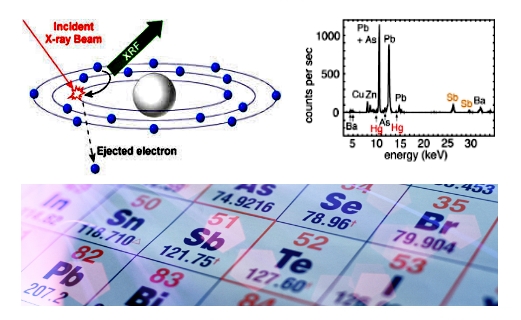
|
Underlying physics
When materials are exposed to short-wavelength X-rays
or to gamma rays, ionization of their component atoms may
take place. Ionization consists of the ejection of one or more electrons from
the atom, and may occur if the atom is exposed to radiation with an energy
greater than its ionization energy.
X-rays and gamma rays can be energetic enough to expel tightly held electrons
from the inner orbitals of
the atom. The removal of an electron in this way makes the electronic structure
of the atom unstable, and electrons in higher orbitals "fall" into the lower
orbital to fill the hole left
behind. In falling, energy is released in the form of a photon, the energy of
which is equal to the energy difference of the two orbitals involved. Thus, the
material emits radiation, which has energy characteristic of the atoms present.
The term fluorescence is
applied to phenomena in which the absorption of radiation of a specific energy
results in the re-emission of radiation of a different energy (generally lower). |
|
Characteristic radiation
Each element has electronic orbitals of characteristic energy. Following removal of an inner
electron by an energetic photon provided by a primary radiation source, an
electron from an outer shell drops into its place. There are a limited number of
ways in which this can happen, as shown in Figure 1. The main transitions are
given names: an L→K transition is traditionally called Kα, an M→K
transition is called Kβ, an M→L transition is
called Lβ, and so on. Each of these transitions yields a fluorescent
photon with a characteristic energy equal to the difference in energy of the
initial and final orbital. The wavelength of this fluorescent radiation can be
calculated from Planck's Law:
-

The fluorescent radiation can be analysed either by sorting the energies of the
photons (energy-dispersive analysis) or by separating the
wavelengths of the radiation (wavelength-dispersive analysis). Once sorted, the intensity
of each characteristic radiation is directly related to the amount of each
element in the material. This is the basis of a powerful technique in analytical chemistry.
Figure 2 shows the typical form of the sharp fluorescent spectral lines obtained
in the wavelength-dispersive method (see Moseley's law).
|
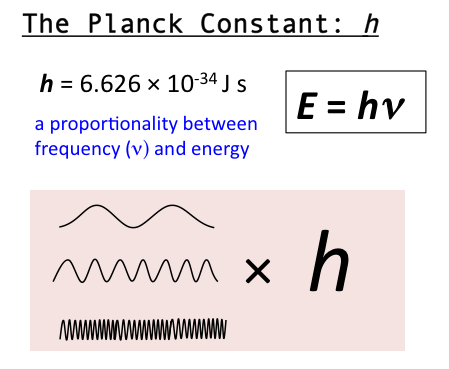
|
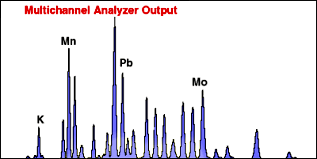
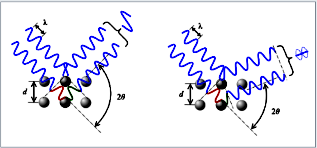
|
Dispersion
In energy dispersive analysis, the fluorescent X-rays emitted by the material
sample are directed into a solid-state detector which produces a "continuous"
distribution of pulses, the voltages of which are proportional to the incoming
photon energies. This signal is processed by a
multichannel
analyser (MCA) which produces an accumulating digital spectrum that can be
processed to obtain analytical data.
In wavelength dispersive analysis, the fluorescent X-rays emitted by the
material sample are directed into a diffraction grating monochromator. The
diffraction grating used is usually a single crystal. By varying the angle of
incidence and take-off on the crystal, a single X-ray wavelength can be
selected. The wavelength obtained is given by the Bragg Equation:
-

where d is the spacing of atomic layers
parallel to the crystal surface.
|
Chemical analysis
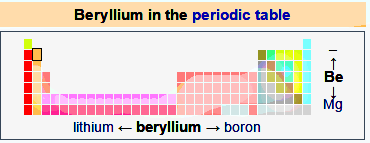
https://en.wikipedia.org/wiki/Beryllium
The use of a primary X-ray beam to excite fluorescent radiation from the sample
was first proposed by Glocker and Schreiber in
1928.[3]
Today, the method is used as a non-destructive analytical technique, and as a
process control tool in many extractive and processing industries.
In principle, the lightest element that can be analysed is beryllium (Z
= 4), but due to instrumental limitations and low X-ray yields for the light
elements, it is often difficult to quantify elements lighter than sodium (Z
= 11), unless background corrections and very comprehensive inter-element
corrections are made. |
|
Metal Analyzer
http://www.spectro.com/products/mobile-metal-analyzer
|
|

|
|
Mobile metal analyzers have been used for over 30 years
to conduct metal analysis onsite. The rapid development in instrument technology
has led to significant advances in the application possibilities.
The current range of applications for mobile metal analyzers far exceeds the
original, yet still critical, steel mill sorting requirements. Demanding metal
analysis tasks such as the laboratory-like analysis of complex alloys or the
detection of nitrogen in duplex steels highlight the modern capabilities of
on-site metal analysis.
|
|
|
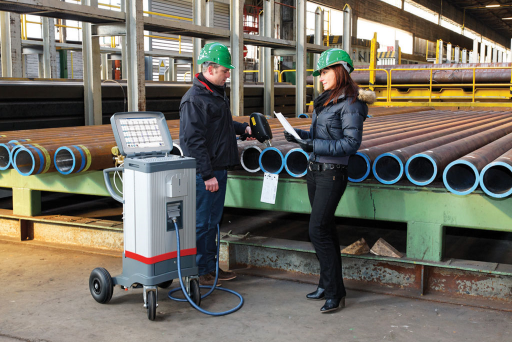
|
Working principle
Arc spark OES (spark OES) is the analysis method used by portable and mobile
metal analyzers.
The principle of the analysis method portable and mobile metal analyzers is
optical emission spectroscopy (arc spark OES or spark OES).
Sample material is vaporized with the testing probe by an arc spark discharge.
The atoms and ions contained in the atomic vapor are excited into emission of
radiation. The radiation emitted is passed to the spectrometer (arc spark OES)
optics via an optical fiber, where it is dispersed into its spectral components.
From the range of wavelengths emitted by each element, the most suitable line
for the application is measured by means of a CCD.
The radiation intensity, which is proportional to the concentration of the
element in the sample, is recalculated internally from a stored set of
calibration curves and can be shown directly as percent concentration.
|
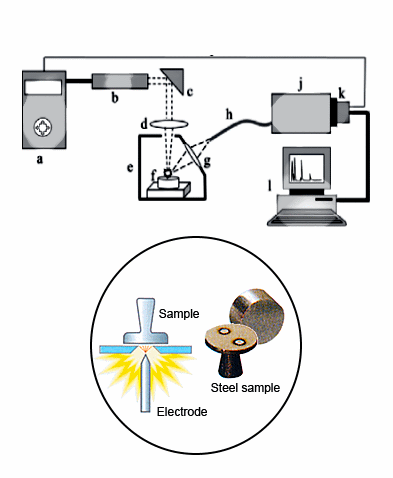
|
Handheld XRF Spectrometers Key
Features:
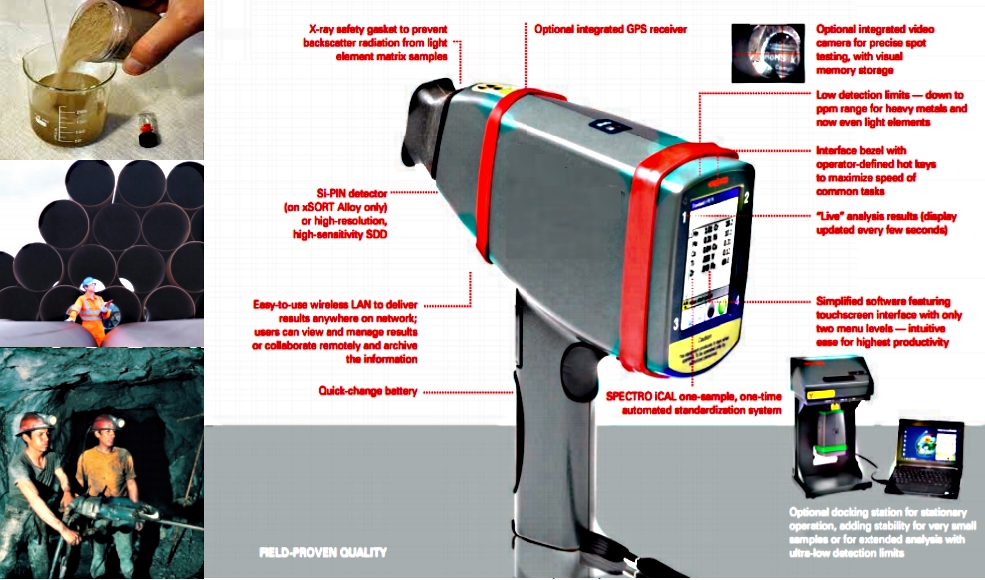
Silicon PIN (S-PIN) detector:
-
Get grade identification of metals in seconds.
-
Including an ultra-simple pass/fail sorting mode, Ideal for the quick incoming
inspection of materials.
Silicon drift detector (SDD):
-
Provides reliable, highproductivity measurement and analysis.
-
Get metal grade analysis in only 2 seconds for most alloys.
-
Only 7 seconds for difficult light elements containing alloys, such as aluminum,
magnesium, silicon, phosphorus, and sulfur.
-
Ideal for scrap metals sorting, positive material identification (PMI), and more
Largest silicon drift detector (SDD):
-
Helps provide reliable measurement and analysis of nonmetallic materials.
-
With an outstanding level of performance.
-
High-productivity spot checks in a few seconds.
-
Hold on the sample longer for laboratory-quality ppm results.
Ideal for environmental and RoHS compliance screening, as well as for geological
exploration and more.
Common features:
-
X-ray safety gasket to
prevent backscatter radiation from light": element matrix samples.
-
Optional integrated GPS
receiver.
-
S-PIN detector(on xSORTAlloy
only) or high-resolution, high-sensitivity SDD.
-
Easy-to-use wireless LAN to deliver, results anywhere on network.
-
Users can view and manage results or collaborate remotely and archive the
information.
-
Ouick-change battery.
-
One-sample, one-time automated standardization system.
-
Low detection limits - down to ppm range for heavy metals and now even
light elements.
-
Optional integrated video camera for precise spot testing, with
visual memory storage.
-
Interface bezel with operator-defined hotkeys to maximize speed of common
tasks.
-
"Live" analysis results (display updated every few seconds).
-
Simplified software featuring:Touchscreen interface with only two menu
levels-intuitive ease for highest productivity.
More Handheld XRF Spectrometers Key Features .....
Portable XRF Spectrometers Key Features:

-
Portable, energy-dispersive X-ray fluorescence (ED-XRF) spectrometers Bring
lab-grade analysis into the field or onto the production floor.
-
Deliver much of the analytical power of top-grade laboratory benchtop analyzers.
-
Provide fast, dependable, truly lab-quality results in the field or on the
production floor.
-
All at a surprisingly low cost.
-
Provide exceptional performance, at wide concentration levels.
-
For all of the relevant elements in the range of Na - U.
-
Ideal portable XRF for onsite applications where results matter.
-
Available in two versions for field & offsite testing or laboratory & at-line
testing.
-
Simplified software is accessed via a touchscreen interface. Predefined
application packages are designed to fit the task at hand.
-
Unique iCAL calibration takes just one sample and only five minutes for
standardization.
-
Optional integrated video system allows precise spot testing, plus image
storage.
-
Optional global positioning system (GPS) adapter.
-
Predefined application, packages designed to fit the task at hand. Large sample
compartment.
-
Silicon drift detector(SDD), available for precious metal Version Si-PIN.
-
Element range from sodium to uranium (for precious metal version, application-specific).
-
Helium purge or vacuum to access light elements such as sodium and magnesium.
-
High-yield battery pack (standard for offsite, optional for at-line)
More Portable XRF Spectrometers Key Features .....
Small Spot XRF Spectrometers Key Features:

-
The market recognized gold standard for precious metals analysis.
-
Widest scope of elements backed by extensive factory calibrations providing the
best accuracy for traces and majors.
-
Fastest measurement times: choose exceptional results at conventional
measurement times, or conventional results at exceptional measurement times.
-
Precious metal, compliance, element line scans and mappings testing
optimizations.
-
Smart alternative to fire assay for elemental analysis.
-
Latest high-spectral-resolution detector technology, greatly improved count
rate.
-
Most advanced midrange comprehsive midrange laboratory XRF benchtop analyzers.
-
Regulatory compliance, fast screening of elements as chromium,bromine, cadmium,
mercury, and lead.
-
Optional collimator changer varies the spot size to fit the required analysis
area.
-
Ultra-fast large-area mapping with Optional XYZ sample tray with maximum 4 x 4
mm spot size.
-
Areas of concern can then be analyzed in detail with a smaller spot.
-
From tiny fragments to larger gunshot residues mapping in forensics science.
-
High precision, accuracy, wide concentration levels, and very shorttimes for
precious alloy(often 30-40 seconds).
-
For small jewelry items or drill cuttings from remelted samples: it analyzes a
small spot (typically 1 mm).
-
For Silver samples, which may be relatively inhomogeneous, averaged results from
an optional larger spot size maintain high-accuracy results.
-
Proprietary fundamental parameter method for alloy testing.
-
Optimized RoHS calibration covering a wide range of elements and matrices.
-
Fast point analysis can determine concentrations of typical and important
elements for unknown samples. (in the range from magnesium to uranium in less
than 180 seconds).
-
Spacious chamber features a large, easy-access opening for sample placement and
removal.
-
Integrated video system aids in exact measurement positioning, especially for
line scan and mapping.
-
Optional 20 mm working distance permits focusing on irregular shapes sample
points.
-
Optional motor-driven XYZ table enables line scans and mappings of large sample
surfaces.
-
The XYZ Table can also be used as sample plate for automatic test of large
numbers of samples.
-
One of the fastest XRF mapping systems commercially available.
-
Mapping of a Eurocard-format double PCB can be completed in less than 30
minutes.
-
Relevant areas can then be rescanned with even higher spatial resolution.
-
Intuitive software supplies all relevant information on a single screen, guiding
the user through each task.
-
Display, printout, and transfer of analysis results, support later data use
and/or proof of compliance.
-
Cost-effective with accuracy and speed than costly additional fire assay, or
ICP-OES testing that requires digestion.
-
Global Performance Services program with more than 200 service engineers in 50
countries.
-
High-value, customized services, include proactive maintenance programs,
application solutions, access to specialists, and instrument-specific training,
etc.
More Small Spot XRF Spectrometers Key Features .....
3x Improvement XRF Spectrometers Key Features:
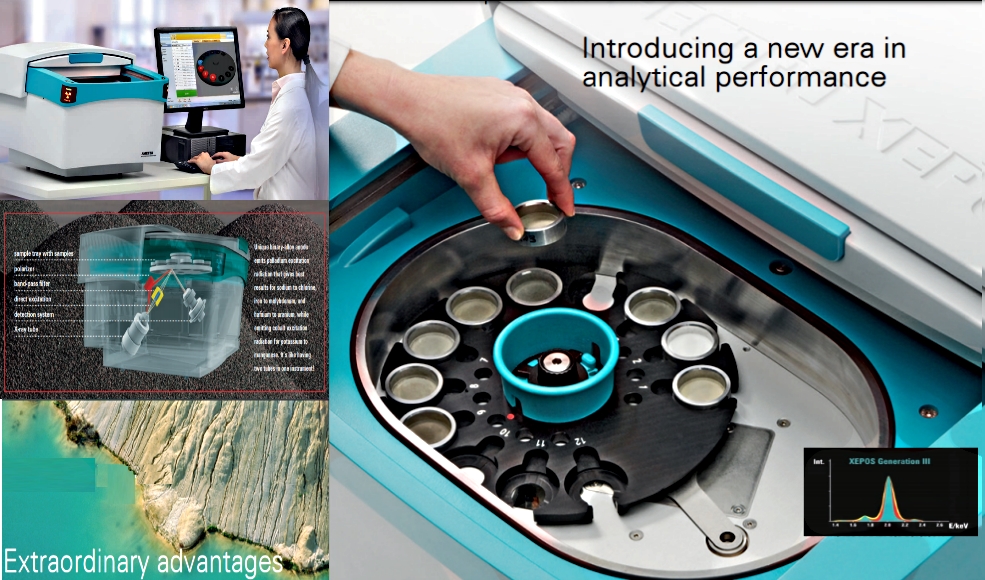
-
Up to 3x improvement: Precision, accuracy for trace elements and major
components.
-
Measure lower than ever: Adaptive excitation, advanced tube design, high-count
throughput.
-
Time is on your side: Exceptional sensitivity and precision or measurement times
conventionally parrelled.
-
Master the unknown: Unprecedented software tool ability to analyze most unknown
samples.
-
Software designed with users: Easiest to use and most powerful yet.
-
Faster measurements: Meeting speed oriented applications maintaining traditional
ED-XRF precision levels.
Unprecedented affordability:
-
Significantly lower investment cost than wavelength dispersive X-ray
fluorescence (WD-XRF) spectrometers.
-
Get WD performance at an ED price !
-
Perform on equal terms with much more expensive WD-XRF technology for many
applications.
-
Low-volume helium purging for light elements in liquids and powders.
-
Vacuum system for solid samples.
-
Advance predefined craft configurations for prioritize measurement requirements.
Rethinking the X-ray tube:
-
One potential weakness of traditional ED-XRF designs: cycling power off between
each measurement, resulting temperature variations inevitably decrease signal
stability, especially with the higher count rates of WD-XRF and newer ED-XRF
instruments, this can complicate analysis, add error, and degrade accuracy.
-
Employs a new aircooled end window X-ray tube.
-
Brighter, laboratory-quality excitation source optimized for maximum energy
generation.
-
Remains powered up, even between measurements, avoiding the instability of
constant on/off cycling.
-
New thick-target, revolutionary binary cobalt/palladium alloy anode design.
-
Extra sensitivity and lower LODs for specific element groups.
-
Fully realize in lower LODs, higher sensitivity, minimal matrix effect impact.
-
Exceptional accuracy for concentrations - both high and low.
-
Attaining substantially longer tube life.
Introducing adaptive excitation :
-
Unique revolutionary new adaptive excitation technology, enabled by new
high-resolution detector and readout system.
-
Contribute to ultra-high sensitivity and minimal background interference, for
greater precision and lower LODs.
-
Precisely configured to produce high sample throughput or best precision for
target application orientations.
-
Optimum excitation conditions for a specified group or groups of elements.
-
The X-ray beam is optimized by fixed excitation optics with different beam
channels.
-
Combined polarized/direct excitation - For optimum analysis of light medium, and
heavy elements.
-
Band-pass filter excitation - first commercial utilization of band-pass filter
for extra performance in the K to Mn range.
Redesigning the detector :
-
New silicon drift detector (SDD) design.
-
High resolution with low spectral interference.
-
Enlarged surface (30 mm2) with maximized active area (20 mm2).
-
High-speed readout, combined ultra-high count rate - up to 1 million counts per
second (cps).
-
Resolution contributes greatly to improved peak-to-background ratios, extremely
low LODs, and ultra-high sensitivity.
-
Even smaller peaks emerge from the background.
-
Excellent limits of detection in a wide range of matrices. Simple yet
sophistical software
Software interface :
-
designed and optimized with third-party testing and benchmarking.
-
Extensive user input & feedback to be exceptionally easy to learn and use.
-
Clearly separated modules offer optimized access to critical information.
-
Once calibrated, routine analysis is a snap.
-
An array of optional precalibrated application packages, meets many users'
needs.
-
Lab managers may request their own application-specific configurations.
-
Standard analyses cover elements in the range from sodium to uranium.
Analyze:
-
Lubricating oils, low-sulfur fuels, Polymers, Chemicals, Air filters,
Clinker/cement/slag, Geological samples, Ceramics and refractories, Cosmetics,
Foods pharmaceuticals, Steel and aluminum sheet coatings, Environmental samples
like soil or sewage sludge, and more.....
Exemplary ease of Use:
-
Superb analysis of unknown samples.
-
Dramatically improved, more flexible, best-in-class software tool, available.
-
Unmatched screening unknown samples for elements from sodium to uranium, without
extensive setup.
-
Handles an even greater range of samples.
-
Including any type of liquids, plus solids from tree leaves to plastics, granite
to glass - with a single calibration.
-
Conquers matrix effects (even at low concentration levels), achieves
breakthrough speed and precision, and handles previously impossible
applications.
-
Supplies screening results in a few minutes.
-
Maximum flexibile versatile sample compartment
-
ED-XRF requires little sample preparation relatively to ICP or AAS.
-
Makes sample handling more convenient than ever.
-
Spacious 372 mm (14.6 in)x253 mm (9.9 in) X 45 mm (1.8 in) measurement
compartment.
-
Accepts an optional sample tray with up to 25 positions for maximized
productivity.
-
Accommodates direct analysis of large and/or irregular-ly shaped samples.
-
Permits analysis of light elements in powders with optional low-consumption
helium purge.
-
Optional vacuum system for economical pressed powder pellets, fused beads, or
solid samples.
-
Optional for both capabilities in a single unit.
Extensive elemental analysis solutions lines :
-
Small-spot, powerful portable and hand-held lines.
-
Complemented by ICP-OES, such as the top-of-the-line, compact midrange, and
"plug-and-analyze".
-
Full lines of both stationary and mobile metal analyzers.
Ultimate confidence with remote monitoring :
-
Extend & Integrate the instrument's self-diagnostic functions with our WLAN
monitor & service system.
-
Including remote monitoring with ongoing diagnostics and alerts.
-
Machine-to-machine support allows proactive alerts, backed up by direct
connection with a remote service expert's PC.
-
Ultimate in quick, sure response and resolution, ensuring uptime service .
-
Help make certain and keep up and running for maximum productivity.
-
More than 200 service engineers based in 50+ countries can safeguard
uninterrupted performance.
-
Maximum ROl over the instrument's entire service life.
Proactive support :
-
Performance maintenance, Performance upgrades, Application solutions,
Consultation, Targeted training, Ongoing support.
More 3x Improvement XRF Spectrometers Key Features .....
XRF Spectrometers Application Report List:
*** Please login to request anapplication report
|